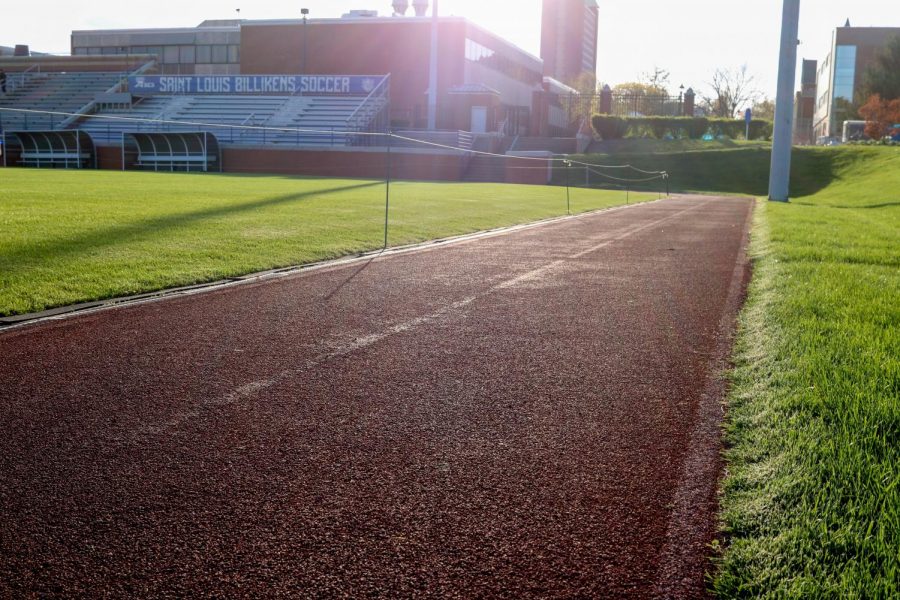Bring Back Sports… Or at Least Track
Your throat gets dry and it’s hard to breath. You feel light headed and you start to sweat. Your body feels warm and you start to cough. Nope. You don’t have coronavirus, you just finished running 400 meters.
Track and field. The ultimate test of humans’ physical capabilities and a competitive outlet for many student athletes. The pinnacle of human athletic competition has been stripped away from the population with the Olympics being postponed and college, high school and youth sports canceled.
Now, in a world with no sports and social distancing tactics in place to reduce spread of disease, it is difficult for one to make the argument that sports should even be considered to resume. But that is why I am going to make that argument
The Plan
While many contact sports are out of the question, I have come up with a perfect solution: to resume track and field activities in strict accordance with health and safety guidelines.
First, we must address the basics. Track and field is broken into two categories, track and potato. No, obviously it is track and field. Track events are running events that take place around a 400 meter track, while field events are jumping, throwing and vaulting events that take place in another area.
So the question becomes what kind of guidelines do we need to look at to bring back track?
Let’s look at some CDC guidelines for large gatherings:
- The overall number of attendees.
- The number of people who are at greater risk.
- The density of attendees.
- The level of transmission in the community.
We can follow these guidelines to create a safe way to compete. By eliminating an audience and reducing the number of teams and the size of teams, we could check off some common social distancing techniques and stay in accordance with CDC guidelines. The average area of a track is around 1,480 square meters. If people practice proper social distancing and remain six feet apart, approximately two meters, then, with the help of some quick maths, we can calculate that around 1,800 people could fit within a standard track. With the width of a track being around four meters, we can keep competitors at a distance by using only the first, fourth and eighth lanes.
1,800 people is a large gathering, so by toning it down, we can safely convene a meet consisting of fewer than 100 people. Here’s how we get that number:
- 5 teams per meet MAX
- 12 personnel per team MAX
- 10-20 officials at a meet
- 5 trainers/medical personnel
5 teams 12 people per team + 20 officials + 5 trainers = 85 people
This gives us some wiggle room pertaining to the size of the event and keeps us under 100 people.
We also must look at the number of people at greater risk and the level of transmission in the community. Obviously, these meets must be held in places where there is smaller transmission. This reduces the risk of exposure. We also must consider how many people are at greater risk. The athletes will not be at greater risk due to their generally low age and heightened physical health. The only potentially vulnerable population would be found in coaching, officiating and medical staff, all of whom can remain at a proper social distance.
But what about the actual competition?
To keep people healthy, we would need to minimize contact with people and objects others have touched. So, for relay races, each hand off should consist of a thorough cleaning of the baton between each leg. Once the baton is properly disinfected, it can be handed off to the next person. Actually, scratch that. We should probably just not do relays. Yeah, no relays.
Field events are another hurdle to jump over, but they are doable. We will break field events into three categories: virtually unchanged, disinfecting and replacement.
Virtually unchanged
This group has no changes to how the event is performed, but involves changes in how people prepare. These events are done with competitors taking turns, and normally people wait in the area. Waiting must be done six feet apart and equipment must be cleaned in between turns. These events include shot put, javelin, hammer throw and discus.
Disinfecting
These events require disinfecting surfaces between each participant. Because pads are used, the surface will be wiped down to kill germs before the next participant. These include high jump and pole vault.
Replacement
This category is a little bit out there, but it is foolproof. The replacement method is used for long jump and triple jump. Because these two events result in participants landing in sand, we must reduce contact with potentially infected surfaces. To combat this, we will replace the sand in the sandpit much like one replaces the kitty litter for a cat. This gets rid of the virus and any other potential germs.
In conclusion, these methods give a blueprint for institutions to follow to reinstate track into athletics in a healthy and safe way. Coronavirus may be fast, but Usain Bolt is faster.
Your donation will support the student journalists of Saint Louis University.




